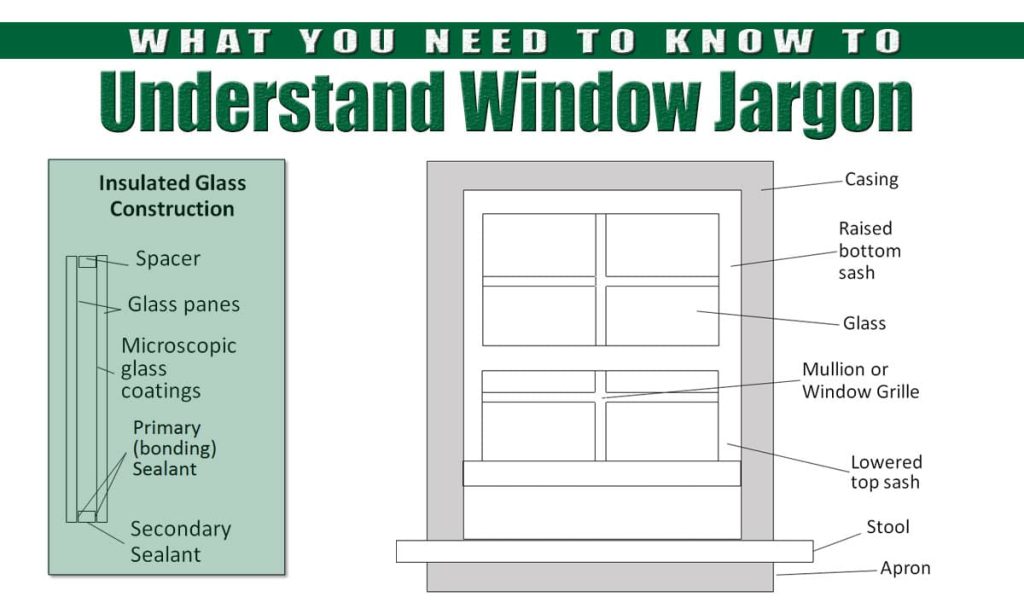

When you start shopping for replacement windows and patio doors in New Jersey and the New York Metropolitan area, you may find that there is a good deal of confusing terminology used in the window trade.
Have you ever tried to have a serious conversation with someone that seemed to be talking over your head, instead of talking with you? You know what we mean – right? When mortgage brokers quote rules and regulations using the legal code numbers, it’s often impossible to know if they are being open and honest, or simply trying to confuse you. At Renewal by Andersen we believe our New Jersey and metropolitan New York customers should be able to get straightforward answers to their questions about replacement windows and patio doors. So if you ask us if replacement windows include sills, we won’t go off on a rabbit trail telling you about Code XYZ that governs sill design.
In this article, we thought it might be helpful to share some common terms that come up when buyers are considering updating a home with replacement windows. If we fail to cover something that would help you make better decisions, let us know by posting your comment below.
When you’re talking about windows, you’ll often find dealers refer to the glass in the window as “glazing.” Glazing is simply another word for glass, the part of the window you see through. It’s important to realize that all glass isn’t created equal. Today, many replacement window options include low-emissivity glass – that means ultra-thin (microscopic) factory-applied coatings that control how much heat is transferred through the glazing, the glass, and how much heat is reflected. This technology can impact U-factor, Solar Heat Gain Coefficient (SHGC) and Light to Solar Gain (LSG) ratings that we explained in another replacement window terms post about understanding the numbers on replacement window performance. Choosing the proper low-E glass based on lot orientation, surrounding buildings and landscaping and other environmental factors ensures you gain the highest energy savings whether you’re updating your home to boost energy-efficiency or primarily for visual improvements.
Gluing two glass panels together would provide more insulation than a single layer of glass, but it wouldn’t improve energy-efficiency as effectively as adding a space or gas fill between the glass. Sealing air or gas between the panes significantly improves performance. We recommend argon gas between the panes, which also slows heat transfer and provides a buffering effect that reduces sound transfer through your window.
The insulating benefits gained depend on several factors, including how much space is between the panes and how well the edges are sealed against leakage and air infiltration. So, in addition to inserting gas between the glass panels in a double-pane replacement window, you need to consider the size and type of spacers manufacturers use.
Research demonstrates that maintaining an equal distance between the panes is vital for maximizing insulating value. Spacer bars keep the two panels at a “fixed distance” and establish a fixed interpane space, while sealants block moisture infiltration and gas leakage without being so rigid the window can’t slightly expand and contract in response to temperature fluctuations. Look for dual-sealant construction, which means one sealant is used to seal the window unit around the perimeter of the glass, and a second sealant type is used to join the glass to the spacer bar to maintain structural stability.
Thermal performance, edge seals and spacer bars are likely to come up in any in-depth conversation about replacement windows. But, there are also between the glass discussions that are all about convenience and visual appeal. Window Grilles, also called sash strips, mullions and grids, add a bit of visual interest to your home. While they are totally optional, you can use between-the-glass grilles to mimic original wood strips that joined smaller panes together to make a larger window, or you may want removable interiors that are stainable so you have more decorating options indoors.
If you are like most consumers today you likely started your replacement window research with an search online. We invite you to call us to schedule a personal home visit so we can explain the design, manufacturing and installation processes when you allow us to help you update your home. Have another question? Just post it in the comment section, fill in the short form on this page, or give us a call at (866) 609-5033.

Learn Everything You Need to Know BEFORE Buying Replacement Windows